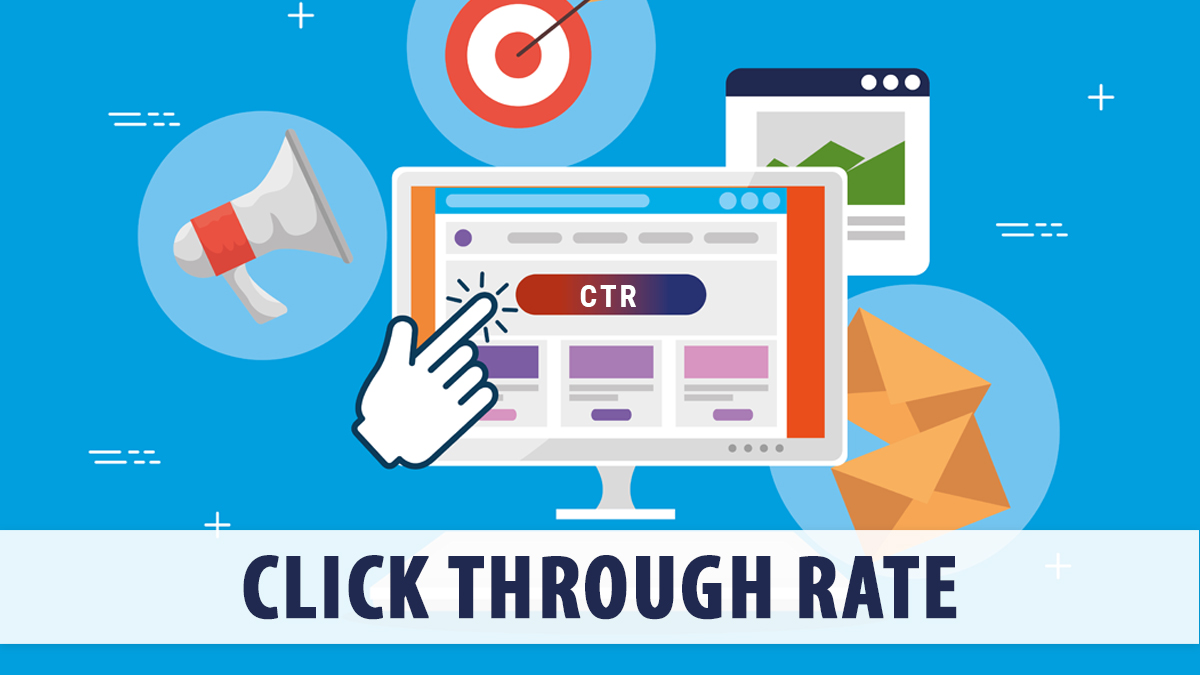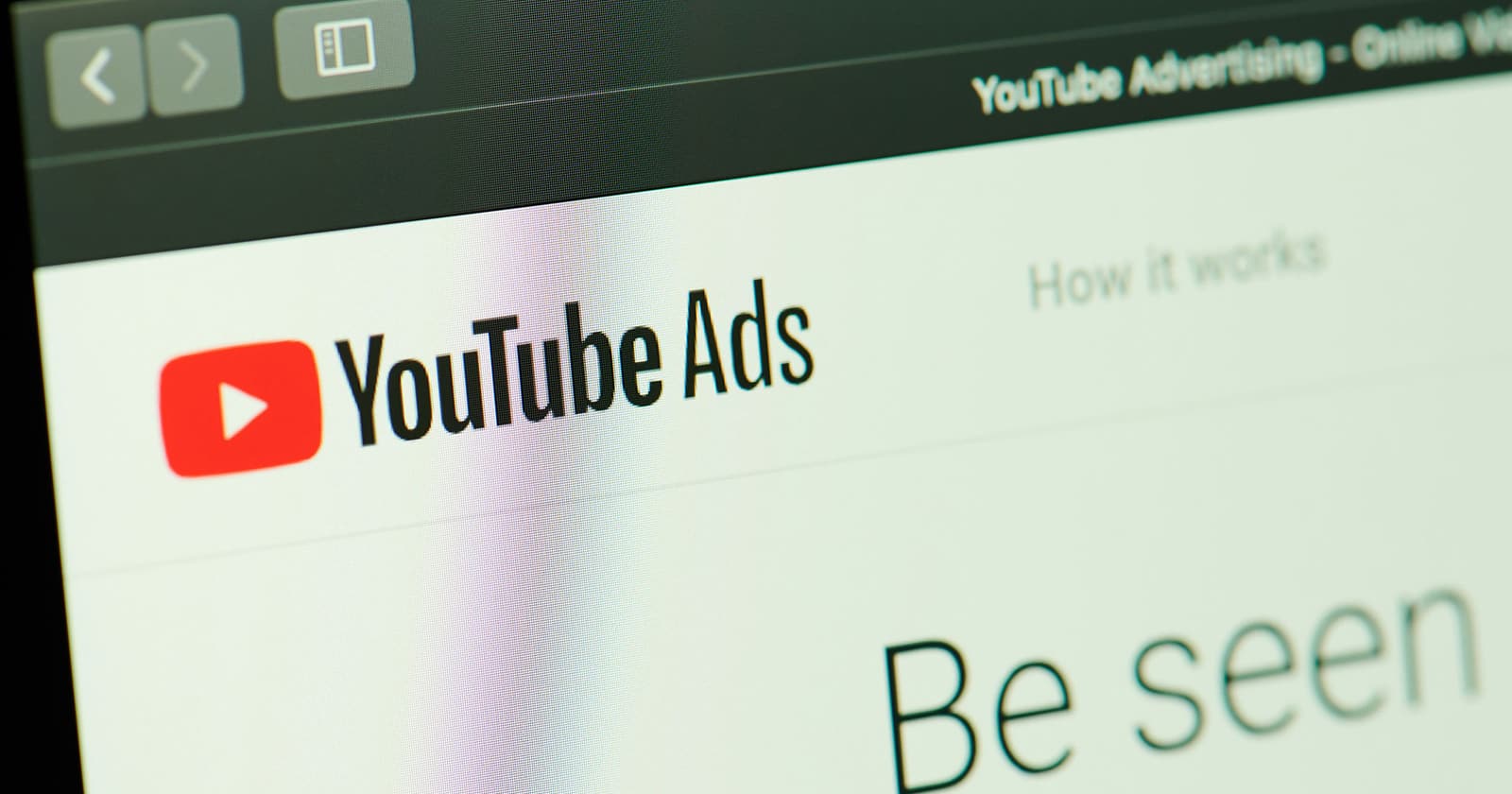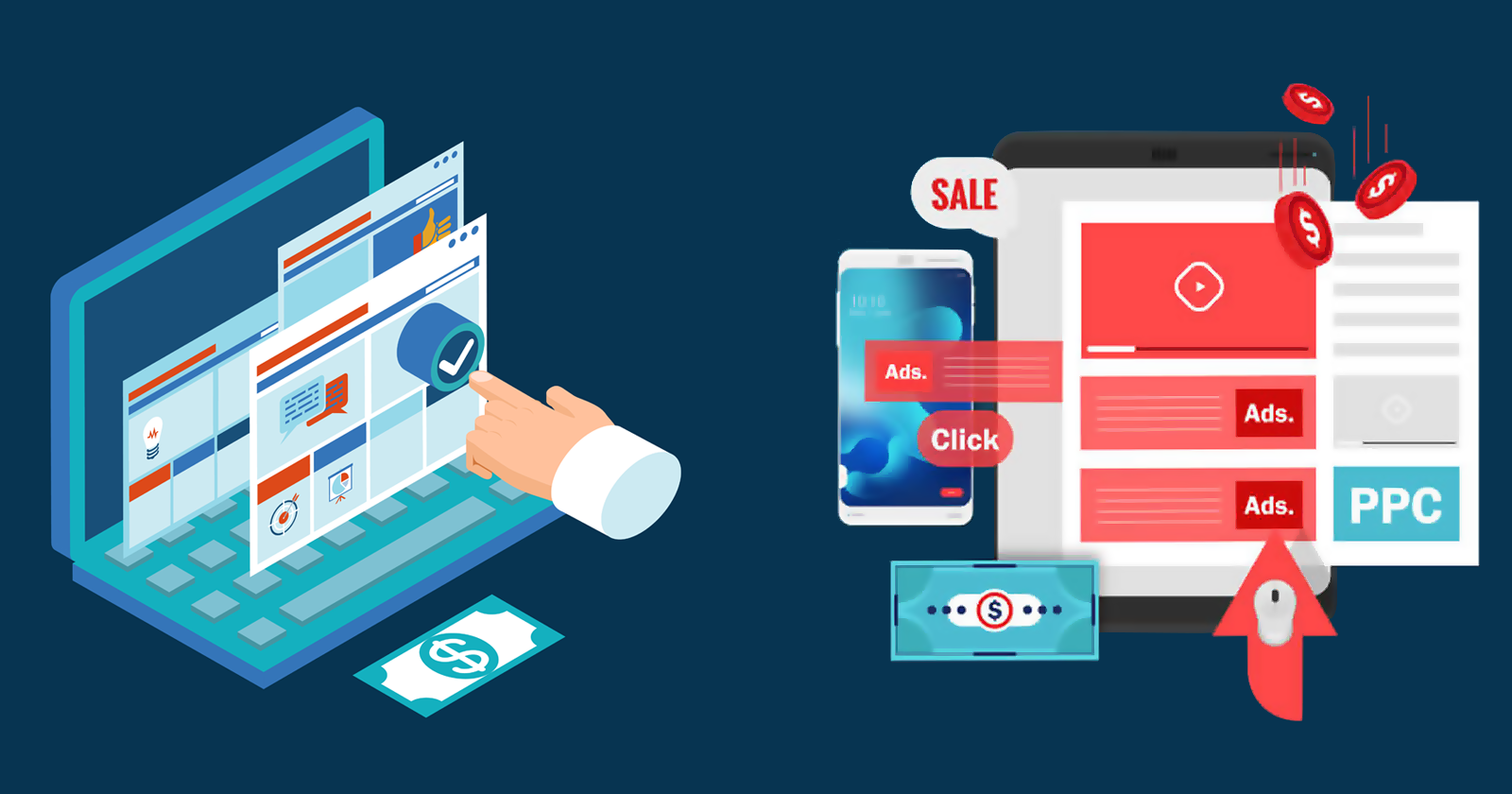The term “CTR” stands for “click-through rate” in digital marketing, a metric that measures the number of impressions per click received by advertisers. Your PPC success depends on having a high click-through rate because it directly affects both your Quality Score and the amount you pay for each click on your search ad. In this post we will look at the importance of click-through rate and the steps to increase it.
What is Click-Through Rate?
In general, click-through rate is the ratio of impressions to clicks. Therefore, in Google Ads, an impression is made when your ad appears in the search engine results page (SERP), and a click is made when the person seeing the ad clicks on it. So, the percentage of people who see your advertisement and then click through to its destination whether it is a landing page, app store, or lead form is known as the click through rate (CTR). The conversion rate (CTR) of a mobile advertising campaign would be 5% if it received 10,000 impressions and 500 app store clicks. Professional paid advertising services take all measures to ensure higher CTR for their client’s ads.
Why Click-Through Rate is Important?
CTRs are a useful tool for evaluating the performance of paid advertising. It is possible to benchmark campaign performance by placing the CTR of one campaign in relation to that of other campaigns. There are many ways to accomplish this. In A/B testing, CTR can be used to compare advertising creative’s like-for-like performance, determining whether or not certain creative features increase interactions. CTRs can be used to compare how well various advertising channels perform. An advertiser can determine their effectiveness by comparing CTRs for banners, video, and other campaign types. This helps them decide where to focus the majority of their mobile advertising performance.
Within the larger attribution funnel, CTRs can also be utilized to some degree for user quality verification. An advertiser can determine whether a high CTR necessarily corresponds to increased user value by linking campaign performance to in-app behavior. This can assist advertisers who are tempted by channels with high CTRs in determining whether those channels will provide high-quality traffic or simply a large number of users, allowing them to adjust their advertising expenditures accordingly.
Steps to Improve CTR
We can now discuss how to achieve a high click-through rate now that we understand what it is and why it is important. Below are a few methods to get started.
Focus on Keywords
To begin, check to see that you are focusing on the appropriate keywords. For higher click-through rates, focus on the following three categories of keywords:
- Commercial intent keywords
- Branded keywords
- Local keywords
Keywords with commercial intent are those that people type in when they intend to make a purchase, such as “best CRM”. Keywords like “what is a CRM” that are informational should be avoided because they will either lead to a lower conversion rate or waste money. Branded keywords offer another excellent opportunity. When your target market is in the buying mode, in addition to your own brand, focus on partner brands, competitor brands, or other brands that they might be looking for. Because local searchers frequently have a high level of commercial intent, local keywords typically receive high CTRs. Google Keyword Planner is the most widely used tool for keyword research.
Have a Compelling Call to Action
It is not a call to action, to inform a user that you have what they are looking for or that your offerings are superior to those of your rivals. Your ad viewers must be actually prompted to take action. And to act now. Buy now. Get it today. Even though it only consists of one or two words, this tiny push can make all the difference. Better still, emphasize a feature or advantage in the CTA, such as “Start saving now” or “Talk to a specialist today”.
Optimize Your Ad Headlines
Special deals like free shipping and discounts are beloved by all. However, rather than simply including them in the description, incorporate them directly into your PPC headlines. primarily because searchers typically only read the headline at first. But also because headline numbers always do well and words like “free” light up the human brain.
Also, Read: What is Google Ad Rank and How to Improve it?
Use Ad Extensions
Extensions increase your ad’s visibility and prominence on the search results page by adding more content to it. As a result, you typically receive more value. Ad extensions can provide people with additional interactive ways to contact you, such as calls or maps, and frequently increase your total number of clicks. AdWords selects which extensions to display in response to each Google search to help you get the most out of your text ads. As a result, you should make use of all extensions that are relevant to your company’s objectives.
Maintain Google Ads Quality Score
Google evaluates the quality and relevance of your keywords and PPC ads using the Quality Score. It is multiplied by your maximum bid to determine your ad rank during the ad auction process and used to calculate your cost per click (CPC). You will get a better return on your investment (ROI) if you improve your Quality Scores. This is because lower conversion costs are associated with higher Quality Scores. Cost per conversion is not how much you pay for each click; rather, it is how much you pay when someone takes the desired action, such as signing up for a free trial or purchasing a product.
Experiment With Ad Formats
Try different types of ads to find the one that best suits your business. Whatever may be the ad type, make it short and sweet. You can rest assured that virtually no advertisements, especially online ones, are read in its entirety unless they are posted on a billboard at a long traffic light. Keep your ads short and sweet so that they can quickly convey a strong message. In the headline and description, include the keyword, but do not repeat it. If you don’t need all of the characters, don’t use them all. Avoid using confusing abbreviations in your advertisement. Use language that is easy to understand.
Another method for developing an efficient PPC marketing strategy is to use responsive search ads. With the best version of your ad, you can get more people to engage with it and reach more potential customers. The objective is to display a variety of titles and descriptions for various users based on their distinct queries and search histories. The search engine will select and use the most popular title and description combination. The user’s search history, previous clicks, device type, and search query (keywords used) are used to display responsive search ads.
Also, Read: How Does Google Ads Generate Responsive Search Ads?
Implement Remarketing
The practice of engaging people who have already interacted with your brand in order to encourage them to take a desired action that may pique their interest, such as converting, is known as remarketing. Remarketing might play a significant role in your advertising strategy. It can benefit your brand in a number of ways such as, it reminds shoppers who have browsed your product to complete their purchase by displaying relevant ad creative and messaging based on audiences’ demonstrated interests and shopping signals. It helps move shoppers to the next stage of their customer journey, engages with former customers and also encourages brand loyalty.
Conclusion
Click-through rates are a way for digital and online marketers to measure the success of email or online advertising campaigns. CTR basically measures how users respond to marketing or advertising campaigns. The metric is frequently used to determine which advertisements and keywords perform better than others. This metric and the conversion rate, which indicates the proportion of clicks that result in actual sales, are frequently used together. The bounce rate, open rate, and click-through rate are all taken into account when designing email campaigns. So use the click-through rate metrics as per your business requirements.
FAQs
Does it mean more sales if the click-through rate is high?
It does not necessarily mean that higher click-through rate means higher sales since not all clicks will convert into sales. The user might click, view the options and then decide to continue their journey later.
How to increase click-through rates?
Have a compelling CTA, place your keywords in the headlines and use ad extensions to increase the click-through rate.
Are there any downsides to high click-through rates?
Since you have to pay for every click, if the clicks are more but they are not converting into sales, then your return on investment will be low.



























